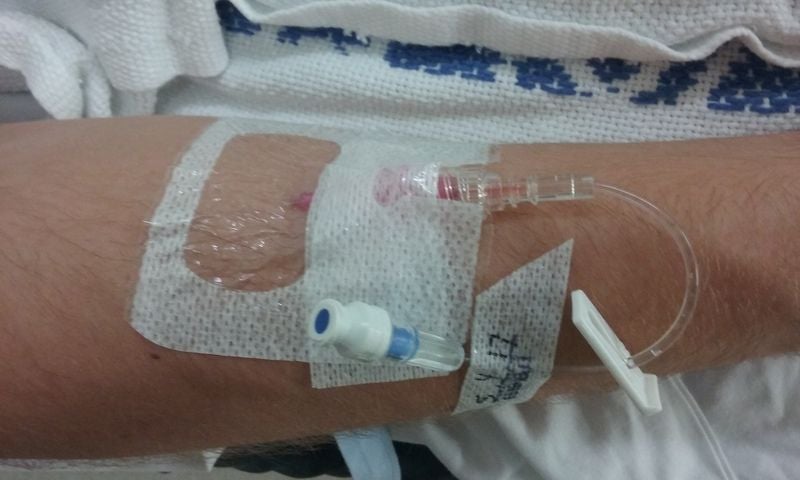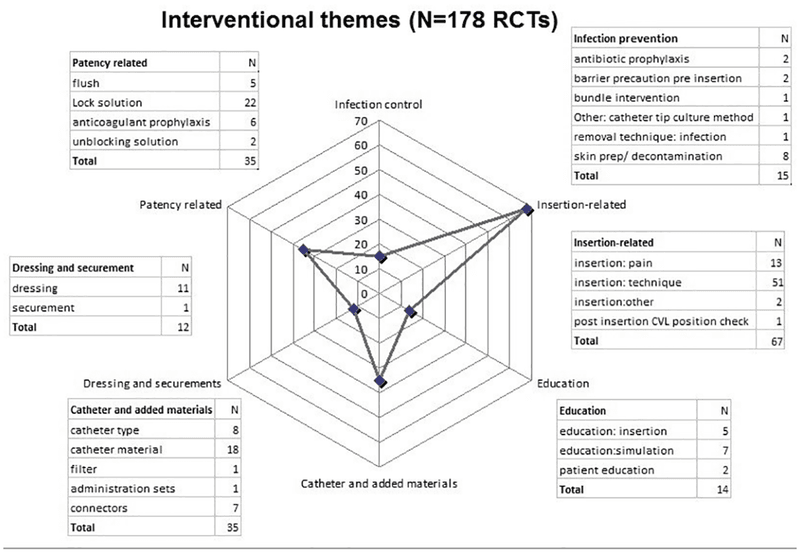Accidental Dislodgement of IV Catheter or Tubing Survey
Posted by Nancy Moureau
on 20 June 2017
This is a research project to gain knowledge and understanding of accidental intravenous (IV) catheter or tubing dislodgement, the frequency, the perception of safety and level of risk to the patient.
To lay the foundation for this research, we are surveying clinicians to identify current practice and perceptions. This survey is designed to assess opinions of practicing clinicians, all others will be excluded. Your participation in this validated survey will take approximately 5 minute...
| Posted in:intravenous catheterIV managementsecurementvascular access devices |
Ten Tips for dressing and securement of IV device wounds
Posted by Claire Rickard, Amanda Ullman, Tricia Kleidon, Nicole Marsh
on 13 June 2017
Ten Tips for dressing and securement of IV device wounds, Australian Nursing & Midwifery Journal 2017;24(10):32-34.
Reprinted with permission of the Australian Nursing & Midwifery Federation.
Nurses insert and care for more than two billion intravascular (IV) devices globally each year. A wound is created for each IV insertion, and the wound cannot heal while the IV remains. Usually, millions of microorganisms live on our skin and cause no harm. However, insertion of an IV ...
| Posted in:AVATARdressingsintravenous catheterIV managementsecurementvascular access devices |
A step-by-step guide to vascular access device audits
Posted by Gillian Ray-Barruel & Amanda Ullman
on 8 June 2017
)
Recent VA audits indicate that VA practice is not perfect, particularly in the areas of redundant devices, insertion site complications, substandard dressings, and poor documentation of site assessment (Alexandrou et al, 2015; McGuire, 2015; New et al, 2014; Russell et al, 2013; Ullman et al, 2017a).
Conducting VA audits can provide evidence that best practice VA policies and procedures are being effectively implemented in the workplace. Less than ideal audit results can provide direct...
| Posted in:AVATARcentral vascular access devicesdressingsintravenous catheterIV managementvascular access devices |
Webinar invitation
Posted by Rita Nemeth
on 8 June 2017
| Posted in:central vascular access devicesintravenous catheterIV managementvascular access devices |
AVATAR educational video on PIVC insertion, maintenance and removal
Posted
on 26 April 2017
Peripheral intravenous catheters (PIVCs) are the most commonly used vascular access device in health care with around 65% of hospitalized patients receiving PIVC therapy during their stay. The insertion of a PIVC is the most commonly performed invasive procedure in hospitalized patients. However, failure rates of PIVCs are high at around 40% before the completion of treatment this impacts significantly on patients, staff and the healthcare system. Failure can be a consequence of occlusion,...
| Posted in:AVATARdressingsflushinginfection preventionintravenous catheterIV managementsecurementvascular access devices |
2017 April AVATAR Newsletter
Posted by Rita Nemeth
on 18 April 2017
The 2017 April AVATAR Newsletter is out. Please, click this link to read it.
You can have a look at our previous newsletters on the website at http://www.avatargroup.org.au/newsletters.html
| Posted in:AVATAR |
Report from AVATAR state of the art in vascular access management seminar
Posted by Kaye Rolls
on 7 April 2017
)
On March 6 just under 100 dedicated clinicians joined us for the inaugural AVATAR State of the Art in Vascular Access Management seminar, held at Rydges Parramatta.
They were a mixed bunch with vascular access clinicians being the largest group (32%), followed by critical care (18%), inpatient services (11%), cancer services (10%) and infection prevention (9%), with the balance made up of several other speciality groups. This eclectic mix made for great conversations as participa...
| Posted in:AVATARcentral vascular access devicesdressingsintravenous catheterIV managementsecurementvascular access devices |
How to assess a peripheral intravenous (IV) cannula
Posted by Gillian Ray-Barruel
on 5 April 2017
)
Most patients need at least one peripheral intravenous catheter (PIVC) during their hospital stay for IV fluids and medications, blood products or nutrition. PIVC complications are common, but they can be prevented or minimised by routine assessment. This article discusses the key points of PIVC assessment.
Is it needed?
Does the patient need this PIVC? Many PIVCs are left in without orders for IV fluids or medications (Limm et al, 2013; New et al., 2014). Others are never used at ...
| Posted in:AVATARdressingsinfection preventionintravenous catheterIV managementpatient experiencephlebitissecurementvascular access devices |
Scoping the evidence for CVADs
Posted by Mari Takashima
on 3 April 2017
)
Central venous access devices (CVADs) provide access to the greater vascular system to administer therapy that is contraindicated to be given peripherally, for longer term treatment, and for venous monitoring and blood sampling.
As clinicians, we come across these devices on a daily basis. We also see CVAD complications and failures, such as bloodstream infections, obstruction, thrombosis, catheter migrations, and others. Effective interventions can prevent many of these complications....
| Posted in:AVATARIV managementvascular access devices |










